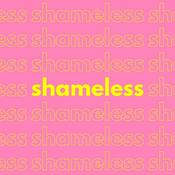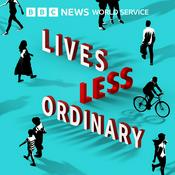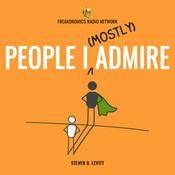269 episodes

AI and the cost to human life — with Karen Hao
17/12/2025 | 54 mins.
AI is sometimes portrayed in utopian terms as the essential technological innovation. At other times, it's described as representing an existential threat to human life, a technological creation that will inevitably lay waste to its creator. Regardless of how we view it, could the cost of AI extend far beyond economics?

What can we learn about politics from Ambrogio Lorenzetti’s ‘Good and Bad Government’?
10/12/2025 | 54 mins.
It is one of the casualties of democratic politics that citizens rarely remain indifferent about the governments they elect. By investing politicians with their hopes or fears, their aspirations and anxieties, voters ensure that they will take the performance of a government personally. This is why politics cannot be emptied of emotion: electors and the elected are bound together by filaments of expectation and accountability, and the conditions of their common life depend on the maintenance of those delicate affective bonds.But when contempt, corruption, greed, incompetence, inattentiveness, unresponsiveness, popular suspicion and outright violence are allowed to eat away at these bonds, it is the political and civil life of the nation as a whole that suffers. For in such conditions, good governance becomes impossible — either because politicians habitually treat the electorate with disdain or because voters are so aggrieved that they gravitate towards those who will give voice to their discontent.That’s why it is imperative to do what can be done to strengthen the political, civic and moral bonds that connect citizens with one another and governors with the governed.How might we cultivate the capacity to imagine that politics can, in fact, be a means of pursuing and achieving the good, that there are virtues inherent to the political vocation? It may well begin with the recovery of an almost pastoral vision of politics as what emerges out of a people’s concern to care for their common life.It is just such an imagination that is richly on display in a series of murals painted by Ambrogio Lorenzetti on the walls of the Sala dei Nova (the Hall of the Nine, otherwise known as Sala della Pace, the Hall of Peace) in Siena’s Palazzo Pubblico between 1337 and 1340. Lorenzetti’s commission was at once to visualise the philosophical undergirding of the political system of Siena under the stewardship of nine self-selecting governors, and to remind those dispensing justice and those seeking it of the stakes of their deliberations.Lorenzetti evidently drew on the political vision of the Nine — their own understanding of the virtues that are inherent to the vocation of good governance — and he/they drew liberally from the tradition of soulcraft/statecraft from the Italian renaissance, as well as from Seneca and Cicero, Augustine and Aquinas. The question is whether we, in our time, with our resources, can recover an analogously compelling vision of guarded optimism, of mutual accountability, of prudence and wisdom, such that we, too, can articulate the conditions in which politics can be a force for good.

The ethics of life-writing: Memoirs may be popular, but can they be truthful?
03/12/2025 | 54 mins.
In the world of book sales, what “romantasy” is to fiction, autobiography/memoir is to non-fiction. There is an undeniable appetite for the purportedly true stories of famous or otherwise public figures whose lives are shrouded in PR or private interests.Moreover, autobiographies have a kind of inherent meaning or telos — disparate elements come together to form a narrative which always will have been meaningful. Part of our desire to read such memoirs is certainly prurient, a wish to know more than we are entitled; but part is also inspirational or “admirational”, nourishing the belief or hope that our lives, too, will end up having been meaningful.And yet, there is nothing uncomplicated about the task of telling the story of our lives. There is an ethical flaw at the heart of such a task: given how given we are to self-justification and self-absolution, how ungenerous we can be in response to the actions and intentions of others, how forgiving we can be to our own inconsistencies and hypocrisies, and how blind we often are to the effects our own behaviour to other people’s lives, who’s to say we are adept at narrating our stories truthfully?And yet our story is our own, and there is a certain humiliation, a certain violence, that accompanies an inability to tell it — for our lives to be wholly narrated by someone else, as though we were a footnote to their story.What, then, are some of the ways that we can discover truthfulness “in the innermost parts” (as the Psalms put it)? There are other forms of life-writing that would seem to evade or at least temper the temptation to self-deception. The example of Helen Garner’s decision to publish her diaries — raw, flawed, achingly human — would stand as a morally credible counterpoint to the sheer overwhelming excess of Karl Ove Knausgaard’s My Struggle. Then there’s also the auto-fictional experiment of Rachel’s Cusk’s Outline trilogy, whereby readers come to know the central character only through her attentive conversations with others. One of the most remarkable recent examples is Helen Elliott’s memoir Eleven Letters to You, which is less an autobiography than it is an account of the friendship, truthfulness, decency of others — Elliott is simply “the hinge holding it all together”.Could it be that we simply cannot know ourselves, the meaning of our lives, without the provocation and perspective of others, who help us come to see that the truth about ourselves is most often discernible through our actions and relationships?

What will we lose if translation becomes wholly automated?
26/11/2025 | 54 mins.
It feels like, for so much of this year, in one form or another, we’ve been trying to count the costs that technological innovations are exacting on our humanity — how AI, in particular, is altering (perhaps irrevocably) our relationship to words, to writing, to beauty, to creativity, to taste, to work, to the natural world, to our interior life.From the very beginning, our concern has been that the allure of convenience — or, better, of frictionlessness — is making us overlook or fail to reflect adequately upon what is lost when certain forms of difficulty are eliminated from our lives. After all, difficulty can be one of the ways we register the true value an activity. To lose the difficulty is to lose precisely what it is that makes the pursuit worthwhile in the first place.A perfect example of this dilemma presents itself in Apple’s announcement that its new AirPods would include a “Live Translation” feature that would allow users who speak English, French, German, Spanish and Portuguese to understand each other (with the promise of more languages to follow). Particularly for travellers, this technology promises to break down the language barrier and alleviate the stress of not being able to understand one’s taxi driver or waiter. It purports to be the digital equivalent of Douglas Adams’s “Babel fish” from Hitchhiker’s Guide to the Galaxy — your own private in-ear interpreter.Now, there are questions about the AI technology — and the large language models that undergird it — that give plenty of reasons to doubt the adequacy or accuracy of the automated translation. As anyone who has tried Google Translate knows, the translation-by-prediction-and-equivalence that machine learning is capable of producing is most often shallow, error-ridden and has a tin-ear for idiom, allusion or humour.But let’s leave those drawbacks to the side for now, and suppose that the technology will eventually be capable of producing fluent, largely accurate translations from one language into another. This still doesn’t overcome the importance of friction, of difficulty, the experience of being suspended between, not just languages, but also cultures and conceptual worlds, and the patterns and rhythms of expression that cannot easily be separated from the meaning of the sentences themselves. At best, automated translation can provide the illusion of, or a kind of ersatz substitute for, “understanding”.To translate from one language into another — particularly when what is involved is poetry or literature — is not merely to find a series of relatively accurate equivalences; rather, it is to find oneself suspended between two worlds, acutely aware of precisely what is not translatable from one language into the other. And yet it is just this experience that at once exposes the limits of our own modes of expression and thinking, and opens up the possibility of creation, discovery and surprise.If translation becomes one more of those difficult tasks we are content to sacrifice on the altar of convenience, we may find that the difficulty is not the only thing we lose.You can read Ross Benjamin’s article “The Costs of Instant Translation” in The Atlantic, and his reflections on translating Daniel Kehlmann’s novel “The Director” on ABC Religion & Ethics.

‘Adult time for violent crime’? What commitments should guide society’s response to youth crime?
19/11/2025 | 54 mins.
Earlier this month, in response to a disturbing rise in youth crime in Melbourne, Victoria’s Labor government adopted a key policy that the LNP took to last year’s Queensland state election.The LNP policy pledged (among other things): to apply adult penalties to children under 18 who committed a range of violent and non-violent offences; to impose mandatory minimum sentences for certain offences committed by children; to abandon the principle that detention should only be used as a last resort when it comes to children; to require judges to give greatest consideration to the effect an offence has on victims when sentencing childrenThe policy was undeniably popular with Queenslanders. In the human rights statement accompanying the Making Queensland Safer Act 2024, the newly elected government acknowledged that the amendments would “lead to sentences for children that are more punitive than necessary to achieve community safety”, and that mandatory sentencing is “in direct conflict with international law standards”. Even so, the government insisted:“these measures and the purposes to which they are directed are clearly supported by Queenslanders and are a direct response to growing community concern and outrage over crimes perpetrated by young offenders. For this reason, the amendments include an override declaration which provides that they have effect despite being incompatible with human rights …”Human rights concerns notwithstanding, and despite the efficacy of such punitive measures now being questioned, Victorian premier Jacinta Allan has proposed a similar suite of legal reforms — which would see: children as young as 14 being tried and sentenced in the County Court; a significant increase in the maximum jail sentences; a requirement that judges “clearly prioritise community safety in sentencing decisions”; the formation of a new Violence Reduction Unit.Like in Queensland, these proposed youth justice reforms are aimed at addressing community concerns and acknowledging the consequences of violent crime on victims. Both goals are not only worthy, but are integral components of any well-functioning justice system. Punishment must deter wrong-doers and provide some succour to victims; it must denounce wrong-doing and protect the community — but the emotions that drive any pursuit of retributive justice (anger, fear, contempt, the desire for revenge) must be tempered by a more “forward looking” commitment to prevention and rehabilitation.Victoria’s proposed youth justice reforms thus compels us to grapple with: the limits of punitive responses to crime; what we believe prison/detention to be for; to what extent society’s desire for punishment needs to be tempered by other responses that might decrease the likelihood of re-offence; how much discretion should be afforded to judges when sentencing; whether an emphasis on rehabilitation and early intervention can be reconciled with the anger society feels at crimes that tear at the social fabric.You can read responses by Kate Fitz-Gibbon and Abraham Kuol to Victoria’s proposed youth justice reforms.
More Society & Culture podcasts
Trending Society & Culture podcasts
About The Minefield
Listen to The Minefield, Conversations and many other podcasts from around the world with the radio.net app

Get the free radio.net app
- Stations and podcasts to bookmark
- Stream via Wi-Fi or Bluetooth
- Supports Carplay & Android Auto
- Many other app features
Get the free radio.net app
- Stations and podcasts to bookmark
- Stream via Wi-Fi or Bluetooth
- Supports Carplay & Android Auto
- Many other app features


The Minefield
download the app,
start listening.
































